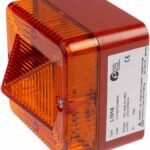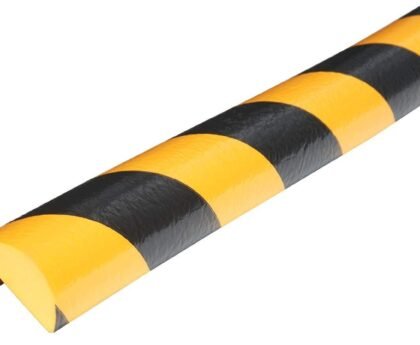An Explosion Proof Xenon Flashing Beacon is a safety device that is designed to prevent the risk of fire and explosion in hazardous environments. These beacons are often used in oil and gas plants, petrochemical facilities, and other industrial sites where explosive gases and vapors are present. They are specifically designed to withstand the harsh conditions of these environments and provide a visual warning in case of an emergency.
How Does an Explosion Proof Xenon Flashing Beacon Work?
An Explosion Proof Xenon Flashing Beacon works by using a high-intensity xenon gas discharge tube that produces a bright, flashing light. The light produced by the beacon is bright enough to be seen from a distance, even in bright daylight. The flashing pattern of the light is designed to be easily recognizable and distinguishable from other lights in the area.
The beacons are typically powered by AC or DC power and come with various mounting options to suit different applications. They are available in different sizes and colors, and their housing is designed to withstand corrosion and extreme temperatures. The explosion-proof enclosure is made of heavy-duty materials that can withstand impact and are sealed to prevent the entry of dust, water, and other hazardous materials.
Benefits of Explosion Proof Xenon Flashing Beacons
There are many benefits of using Explosion Proof Xenon Flashing Beacons in hazardous environments. Here are a few:
- Provides a Visual Warning – The flashing light produced by the beacon is an effective way to warn workers of potential hazards in the area. It can be seen from a distance and is easily recognizable, even in bright daylight.
- Easy to Install – The beacons come with various mounting options, making them easy to install in different locations.
- Low Maintenance – The beacons are designed to be low maintenance and can last for many years without the need for frequent replacements or repairs.
- Durable – The explosion-proof enclosure is made of heavy-duty materials that can withstand impact, extreme temperatures, and other harsh conditions.
- Cost-Effective – The cost of an Explosion Proof Xenon Flashing Beacon is relatively low compared to other safety devices used in hazardous environments.
Applications of Explosion-Proof Xenon Flashing Beacons
Explosion Proof Xenon Flashing Beacons are widely used in different industries and applications. Here are a few examples:
- Oil and Gas Industry – These beacons are commonly used in oil and gas plants to warn workers of potential hazards such as gas leaks, fire, or explosion.
- Petrochemical Industry – The petrochemical industry uses Explosion Proof Xenon Flashing Beacons to warn workers of potential hazards in different areas such as loading docks, storage tanks, or processing plants.
- Mining Industry – The mining industry uses these beacons to warn workers of potential hazards in underground mines such as gas leaks, fire, or collapse.
- Pharmaceutical Industry – The pharmaceutical industry uses these beacons to warn workers of potential hazards in different areas such as laboratories, clean rooms, or manufacturing facilities.
Regulations and Standards for Explosion Proof Xenon Flashing Beacons
Explosion Proof Xenon Flashing Beacons are safety devices that are designed to prevent the risk of fire and explosion in hazardous environments. To ensure their safety and effectiveness, these beacons must comply with various regulations and standards. Here are some of the key regulations and standards that apply to Explosion Proof Xenon Flashing Beacons:
- ATEX Directive: The ATEX Directive is a European Union regulation that sets out the requirements for equipment used in potentially explosive atmospheres. It requires that Explosion Proof Xenon Flashing Beacons be certified to meet specific standards for explosion protection. The directive applies to all equipment used in potentially explosive atmospheres, including electrical and non-electrical equipment.
- IECEx Certification: The International Electrotechnical Commission (IEC) is an international organization that sets standards for electrical equipment and safety. The IECEx certification is a global certification that verifies that an Explosion Proof Xenon Flashing Beacon meets international safety standards for use in hazardous environments. The IECEx certification ensures that the beacon is manufactured in compliance with the relevant international standards, and that it has been independently tested and verified by a recognized certification body.
- National Electrical Code (NEC): The National Electrical Code is a set of regulations that govern the installation of electrical equipment in the United States. The NEC includes specific requirements for the installation and use of Explosion Proof Xenon Flashing Beacons in hazardous environments. These requirements include the type of wiring and conduit used, the location of the beacons, and the type of explosion protection required.
- National Fire Protection Association (NFPA): The National Fire Protection Association is a US-based organization that sets standards for fire protection and prevention. The NFPA 70, also known as the National Electrical Code, includes specific requirements for the installation and use of Explosion Proof Xenon Flashing Beacons in hazardous environments.
- Underwriters Laboratories (UL): Underwriters Laboratories is a global independent safety science company that tests, certifies, and validates products for safety and performance. The UL certification verifies that an Explosion Proof Xenon Flashing Beacon meets UL’s safety requirements for use in hazardous environments. The certification ensures that the beacon is manufactured in compliance with UL’s standards, and that it has been independently tested and verified by UL.
Conclusion
Explosion Proof Xenon Flashing Beacons are essential safety devices that are used in hazardous environments to prevent the risk of fire and explosion. These beacons are designed to be durable, low-maintenance, and easy to install. They are available in different sizes, colors, and mounting options, and their flashing pattern is easily recognizable and distinguishable from other lights in the area. To ensure the safety and effectiveness of these beacons, they must comply with various regulations and standards, including the ATEX Directive, IECEx Certification, NEC, NFPA, and UL certification. By complying with these regulations and standards, businesses can ensure that their workers are safe and that their operations are compliant with applicable laws and regulations.



